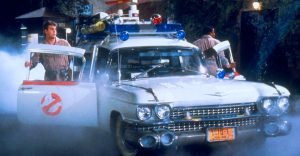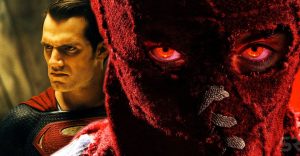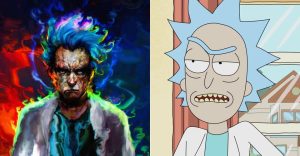Star Wars: Why Disney Dumped “Dark” and “Gray” Jedi From Canon

Since Disney took ownership of the Star Wars property and began streamlining the canon, the Jedi have been presented as good (albeit flawed) practitioners of the light side of the Force, de-canonizing multiple other morally questionable factions. Disney’s contribution to the Star Wars franchise has been met with a decidedly mixed reaction; certain sections of the fanbase are widely disapproving of the recent Sequel Trilogy, while other groups embrace contributions such as Rogue One: A Star Wars Story and The Mandalorian. Hopefully, now that the Skywalker Saga has officially come to an end, Disney can give the property more room to breathe and explore new and exciting corners of the universe.
Within the world of Star Wars, the Jedi Order serves as a peacekeeping religious organization defined by their devotion to the light side of the Force. Although self-described as apolitical, the Jedi frequently come to the aid of the Galactic Republic in defense of democracy and freedom throughout the galaxy, even forgoing their peacekeeping ways and serving as generals and commanding officers during the Clone Wars. While their strict code of ethics and religious dogma oftentimes cloud their judgement, the Jedi truly believe in the nobility of their cause. None of the films in the Skywalker Saga have explored the galaxy during the height of the Jedi Order, but that’s exactly what Disney is planning on doing with the High Republic series of novels and comic books, set over 200 years before the prequel trilogy.
Although the mainstream films have portrayed the Jedi as bound to the tenets of the light side of the Force, there have been many different factions and subsections of Jedi. Before Disney erased many of them, alongside most of the EU, two of the most popular sub-categories were the Gray Jedi and the Dark Jedi.
What Were Gray And Dark Jedi In The Expanded Universe?

The Expanded Universe, prior to its de-canonization by Disney, was a sprawling extension of the main film canon that introduced dozens of fan-favorite concepts, characters, storylines and villains, many of which would be borrowed by Disney’s Sequel Trilogy. In particular, the EU is responsible for fleshing out the history of both the Sith and the Jedi Order, giving them both an appropriate degree of nuance and intrigue. The Jedi Order specifically has gone through several major transformations, focused on the strict adherence to their religious code. This point of contention has long been the subject of dissent and conflict, and the rigorous Jedi code is what creates the separation between the different types of Jedi.
In the EU canon, Gray Jedi are a faction of Force-wielders who reject the stifling teachings of the Jedi Order by indulging in both the light and dark side of the Force, yet never losing themselves to the dark. This alignment rose in popularity after the Dark Wars, in response to the Jedi Order attempting to consolidate a centralized form of power, rewriting the Jedi Code to make it stricter, a decision that was rejected by many Jedi across the galaxy – a faction who would go on to be known as Gray Jedi by both the Jedi Order and the Sith.
Dark Jedi, on the other hand, are much different in context. While the mainstream films have generally labeled any “evil” Force-users as Sith Lords, within the EU, the Sith are a very specific dark side faction that doesn’t just belong to anyone. Therefore, Dark Jedi is generally a blanket term referring to any Force-users who reject the light side of the Force and work within the dark side, without following the teachings of the Sith. Traditionally, Dark Jedi are usually former members of the Jedi Order who have fallen from grace, but Dark Jedi can be any Force-wielding adept proficient in the usage of the dark side. The Sequel Trilogy’s Kylo Ren would arguably be a perfect example of a Dark Jedi, as the teachings of the Sith are (seemingly) long dead when he comes to power.
Star Wars Canon Establishes Many Force-Wielding Factions

Unlike the mainstream films, extended canon of books, comics, and animated shows introduced since the Disney acquisition have depicted a multifaceted range of Force-wielding organizations, several of which defied moral binaries of good and evil. While the Skywalker Saga generally focuses on the eternal conflict between the Jedi and the Sith, the larger canon deepens this by introducing many other organizations that all approach the Force in different ways, such as the Witches of Dathomir, the Dagoyan Order, the Guardians of the Whills, Jedi, Sith, Force-Wielders, the Church of the Force, the Knights of Ren, and more.
Each of these different sects have their own ideals and personal interpretations of the Force, and there is no particular wrong or right path. The Jedi specifically is a group defined by their sense of religious dogma, and the films have made it a point to frequently show how their adherence to their outdated code of ethics can cause massive repercussions for those within the Order. Characters like Anakin Skywalker and Ben Solo are living proof of how the shackles of the Jedi code can ultimately turn those with good intentions into corrupted versions of themselves, to the detriment of the rest of the galaxy.
Dark Jedi and Gray Jedi Contradict Jedi Dogma

Ultimately, this is precisely the reason that both Dark Jedi and Gray Jedi were tossed from canon. While there are certainly canon characters who would still fit under both monikers in the now-defunct Star Wars Legends canon (Ahsoka Tano post-Clone Wars and Luke Skywalker in The Last Jedi spring to mind), the general terms are no longer used within canon additions to the franchise, because of how they both contradict Disney’s depiction of the Jedi Order.
In the early days of the EU, a Jedi was essentially a Force-wielder, which granted room for characters to exist within a spectrum of Gray/Dark/Light. But now, Disney has essentially regulated all Jedi to practitioners of the light side of the Force, and followers of the teachings of the Jedi Order. This means that anyone who doesn’t follow those teachings is inherently Jedi, and would fall into another affiliation (or be unaffiliated entirely).
While characters can (and do) still manifest the Force in the way Dark and Gray Jedi of Star Wars Legends did, the labels of “Dark Jedi” or “Gray Jedi” have been eliminated as the Jedi are supposed to adhere strictly to the light, so the term Gray Jedi is not unlike a carnivorous vegan or an atheist Christian.
While the stricter interpretation of the Jedi Order may seem restrictive, that’s actually part of the point, as the consequences of the overly dogmatic Jedi is one of the biggest overarching themes of the Skywalker Saga. While some may miss their Dark Jedi and Gray Jedi characters, hopefully, new canon finds the time to explore the stories of more non-Jedi Force-users in-depth instead of focusing on the polarized Jedi vs Sith dynamic that has dominated canon so far.
About The Author
















